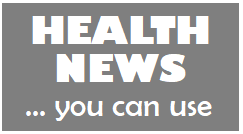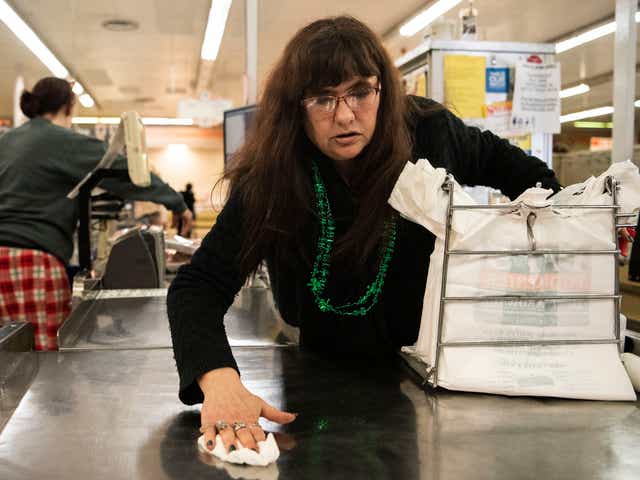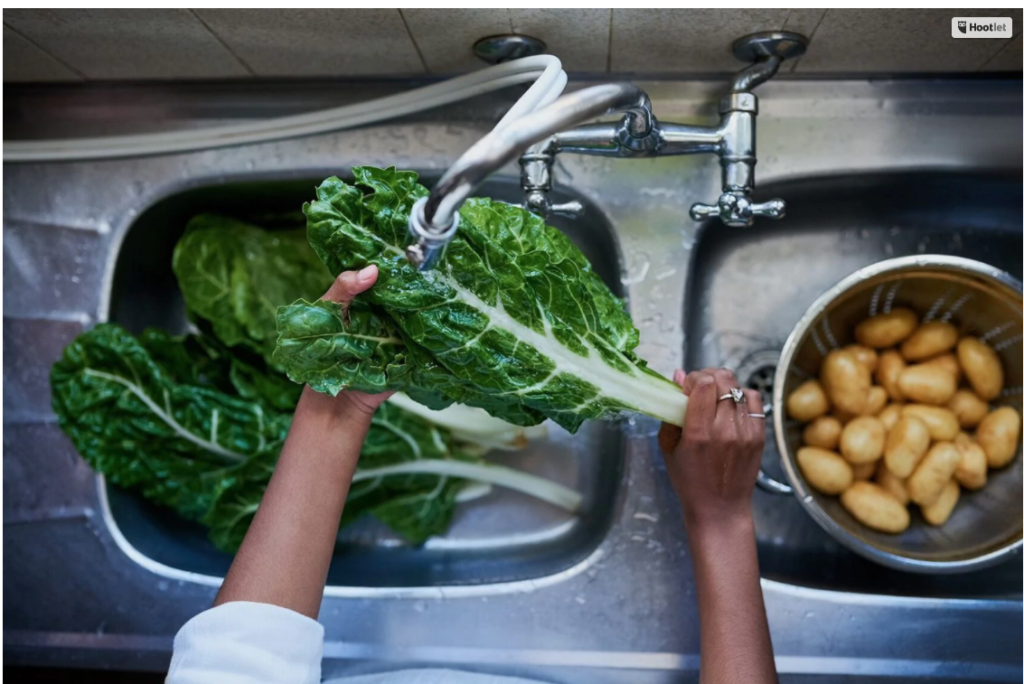Food Safety: Some Covid-19 questions answered
Food safety is of paramount importance during this time, but it’s important all year round. Here is a segment of a much longer article published in SeriousEats.com. To read the complete article, click here. 
Can I get COVID-19 from touching or eating contaminated food?
there is currently no evidence that COVID-19 has spread through food or food packaging
According to multiple health and safety organizations worldwide, including the CDC, the USDA, and the European Food safety Authority, there is currently no evidence that COVID-19 has spread through food or food packaging. Previous coronavirus epidemics likewise showed no evidence of having been spread through food or packaging.
 Are we sure food isn’t a vector of COVID-19 transmission?
Are we sure food isn’t a vector of COVID-19 transmission?
No, we don’t know for sure. However, there is strong evidence to suggest that food is not a vector. The epidemiology of food-borne pathogens is well studied, with government data going back to 1938. The spread pattern of COVID-19 does not fit models of foodborne outbreaks, which are defined as two or more people getting sick from the same contaminated food or drink.
For instance, Singapore has tracked its COVID-19 patients and submitted them to extensive interviews by teams from the Ministry of Health to try to determine patterns of spread. It’s been found that most cases are linked to clusters of people, including hotel guests attending conferences, church groups, and shoppers, while none are linked to contaminated food or drink.
The fact that every person eats multiple times a day and thus far no link has been found between eating and viral clusters is strong evidence that no such link exists.
I’m still not convinced. How could food not be a vector?
Let’s say a food worker coughs while preparing my food, how could I not pick up the virus from eating it? This confused me as well, which is why I specifically inquired about it. According to Chapman, the risk is minimal. Even if a worker sneezes directly into a bowl of raw salad greens before packing it in a take-out container for you to take home, as gross as it is, it’s unlikely to get you sick.
This 2018 overview of both experimental and observational study of respiratory viruses from the scientific journal Current Opion in Virology (COVIRO) explains that respiratory viruses reproduce along the respiratory tract—a different pathway than the digestive tract food follows when you swallow it. And while you might say that you just inhaled that salad, more likely you ate it with a fork and swallowed it.
What about eating with your hands?
So if ingesting the virus isn’t a concern, what about this scenario: a worker coughs on a cutting board then assembles a hamburger directly on that board before placing it in a take-out container. You then come home and eat that burger with your bare hands, then pick your nose, or do something else that deposits the virus along your respiratory tract. In this situation, the viral load has been diluted several times. First when it was transferred from the board to the burger bun. Next, more viral load was shed when the bun was placed in the takeout container. It is diluted again when you pick up the burger before interacting with your face in inadvisable ways. While he didn’t rule out the possibility of picking up the disease this way, Chapman described it as “a moonshot, even before you touch your face.”
Using clean silverware when possible and washing your hands after eating and before touching your face further minimizes that risk.

Continue to wash your produce as usual. Credit: The Washington Post
Are there any special risks associated with food?
None that have been recognized. Food handlers are specifically trained in proper safety and hygiene procedures. Federal and state-level regulations mandate everything: the location of handwashing sinks, the type of soap used in them, the frequency of work-surface sanitization, the temperature of the dishwasher, the temperature to which various foods must be cooked, the rate at which they must be chilled, the cleaning and storage process for raw product, et cetera. Any restaurant or market that handles, packages, or serves food should be—and usually is—following all of these guidelines. The penalties for noncompliance vary by jurisdiction, but are typically severe, ranging from posted notices for minor violations to outright shut-downs to multiple minor violations or major violations. (Here are California’s code and enforcement guidelines, for reference.)
The point is: Eating food is not any riskier than any number of other activities you perform on a daily basis in which you come into contact with items other people have handled. Indeed, the hygiene standards in place at food service operations make that risk even smaller.
Am I more likely to get COVID-19 from take-out, delivery, or cooking at home?

The main risk factor is proximity to other people, so inasmuch as you have a higher chance of coming in contact with other people outside your own home, picking up food is a higher risk than having it delivered or cooking it yourself.
That said, there are other risks associated with cooking at home, particularly in shopping at supermarkets and handling potentially contaminated food packaging. The cook at your local restaurant most likely follows stricter hygiene and safety protocols than the supermarket worker stocking the shelves. A good rule of thumb is to treat anything that comes into your home from outside, whether food, mail, or other people, as potentially contaminated and act accordingly. Wash your hands after bringing it home, transfer to clean containers and/or sanitize packaging when possible, and wash your hands before, during, and after cooking. (And stop picking your nose.)
Does Chinese food pose a greater risk than other food? What about imported food and goods?
There’s no indication of additional risk associated with imported foods or other products. Viral load decreases on all products with time—whether that’s a plastic toy or a bunch of bananas. The increased transportation time for imported goods means that it’s far more likely to be contaminated by the person unloading the shipping container or stocking the grocery store shelf than anyone at its point of origin.
While it is true that COVID-19 originated in China, all indications show that the transmission to other countries has been person-to-person, which is why efforts by authorities ranging from state and local governments to the WHO are focused on limiting person-to-person contact, not the movement of goods.
If I’m still concerned, does reheating food before eating it destroy the virus?
Yes. As with any bacteria or virus, safe cooking is a function of temperature and time. The hotter the temperature, the less time you’ll need to reduce viral or bacterial load to a safe level. With salmonella, for instance, 165°F (75°C) is hot enough to make a 5-log reduction in bacterial load in under a second (that is, only one out of every 100,000 bacteria will survive that temperature and time). At 145°F (63°C), the same reduction in pathogens would take around 10 minutes. (Bear in mind this is the temperature of the food, not the oven.)
Temperatures and times for coronavirus are not yet fully researched, but scientists suggest a temperature of 149°F (65°C) for at least 3 minutes is sufficient. Experts assume that the virus will respond like other pathogens and that hotter temperatures will require shorter times, but we currently do not have experimental data to prove it.
When reheating or cooking solid foods, such as a chicken breast, a steak, or a loaf of bread, it is very unlikely that any viral or bacterial load will have penetrated past the surface unless the food has been pierced or cut, so heating just the exterior is sufficient (for safety, if not for palatability).
How do I sterilize my food?
- Heat liquids like soups, stews, and sauces to a brief simmer, making sure to stir frequently so that it heats evenly throughout.
- Microwave vegetables, pasta, thick purées like mashed potatoes, and meat until piping hot—hot enough that you’d worry about burning your mouth if you took a bite. For most microwaves, that means about 90 seconds per serving on high heat (but microwave power can vary).
- Sauté loose bite-sized items like short pasta shapes, loose vegetables, or stir-fries until they maintain a steady sizzle as you stir them around the pan. A minute or two in a preheated skillet is sufficient for a couple of servings.
- To reheat cutlets, casseroles, or bread in the oven, preheat the oven to 400°F (205°C), place the food on an oven-safe tray with shallow sides (high sides can block hot air from circulating), and heat until the surface of the food is too hot to touch for more than an instant.
- If you own a sous-vide circulator, follow the appropriate sous vide recipe guide in our archives. Treat whatever food you are reheating as if it were starting from raw. (See the next section for more information on the safety of slowly reheating food.)
- Chopped-and-formed foods like meatloaf, meatballs, dumplings, falafel, etc. should be thoroughly heated to the center, following the time and temperature guidelines stated above (heat to an internal temperature of at least 149°F/65°C, and hold it there for at least 3 minutes).
If you want to be extra-careful, use a digital thermometer to check the temperature of your food inside and out before serving or eating.
Does “the danger zone” apply to Covid-19?
You may be familiar with the concept of “the danger zone,” the temperature range of 41°F to 135°F in which bacteria thrive. Proper food handling dictates that foods spend no longer than four hours total between those temperature ranges before consumption. When reheating food, this includes the original cook time, the cooling time, and the reheating time (pay extra attention to this when reheating foods sous vide). The good news is that viruses require a host cell to replicate, which means that the coronavirus will not multiply on your food, even within the danger zone. Indeed, just as it does on other surfaces, the viral load on your food will decrease with time.
That said, you should still continue to follow good food safety procedures and mind that danger zone—all the normal bugs are around, even during the coronavirus pandemic.
What’s the safest way to shop at the grocery store or supermarket?

Here’s my strongest recommendation: go to the local grocery store instead of the big shops. Smaller stores mean fewer customers, which lowers the odds of running into infected people and contaminated surfaces.
Moreover, while the Costco and Safeway near my house have had trouble keeping anything on their shelves, I’ve made trips to my local Japanese market, Chinese supermarket, and Latin produce market and found them fully stocked with goods, and nearly empty of people. (And I promise you, they’ll appreciate the business right now).
Here are a few ways you can keep yourself safe at the supermarket:
- Go at off-peak hours to avoid crowds. Bonus: Most supermarkets restock their shelves with deliveries late at night. Hit them up at this time or early in the morning and you’ll be rewarded with wide open, freshly-stocked aisles.
- Keep your distance in line. I’ve seen people lining up right next to each other for the pharmacy and the supermarket checkout. Don’t do that! Wait in line at least 6 feet away from the person in front of you, and gently request that anyone behind you follow the same rule, for everyone’s safety.
- Overfill your prescriptions if possible. Talk to your Doctor about ensuring you have enough of your prescription medications to last for at least several weeks to avoid extra trips to the pharmacy.
- Using the self-checkout lane reduces your contact with other people, but it also increases interaction with secondary potential infection points, like the touchscreen display and the bar code scanner. On balance, I’d recommend avoiding person-to-person contact over surface contact and stick with the self-checkout. If you do go with a cashier, bag your own groceries rather than having them handled by another person any longer than necessary.
- Wash your hands when you get home and if possible, use a hand sanitizer after leaving the store and before touching the door to your vehicle or home.
- Don’t hoard. This is not the zombie apocalypse. Get what you’ll need for a few weeks at most.
- Use touchless pay systems. Your phone probably already has a touchless pay system you can link to your bank account. If you can’t go touchless, use a credit card and avoid cash when possible.
Is it okay to buy produce from open bins?
So long as you are following proper food preparation procedures at home—clean, separate, cook, and chill—and following the basic hygiene guides explained here and elsewhere, the risk from getting COVID-19 through produce that other people have touched is minimal.
Remember: not a single positive case has been linked to food.
Should I be using an antibacterial soap?
There is no advantage to using an antibacterial soap over any other soap. First off, COVID-19 is caused by a virus, not a bacterium. More importantly, the mechanism by which soap protects against viruses is inherent to all soaps. The same properties that make soap effective for cleaning greasy pots and pans make it effective against viruses.
Viruses are protected by a lipid and protein membrane. Soap is a surfactant specifically intended to dissolve lipids. As Professor Pall Thordarson, acting head of chemistry at the University of New South Wales explains in The New York Times, soap molecules act like miniature crowbars that pry open virus particles, effectively neutralizing them.
Any hand or body soap is effective for washing ourselves, no antibacterial agents needed.
What about hand sanitizers?
Assuming you can get a bottle, the CDC recommends using a hand sanitizer with at least 60% ethanol or 70% isopropanol. Most brands of hand sanitizer fall into this range. I would recommend sticking to regular old soap at home and carrying around a small bottle of sanitizer with you when venturing outside. It’s especially useful to have when you want to sanitize your hands before re-entering your vehicle or touching your front door knob.
______________________
Credit: SeriousEats.com





















